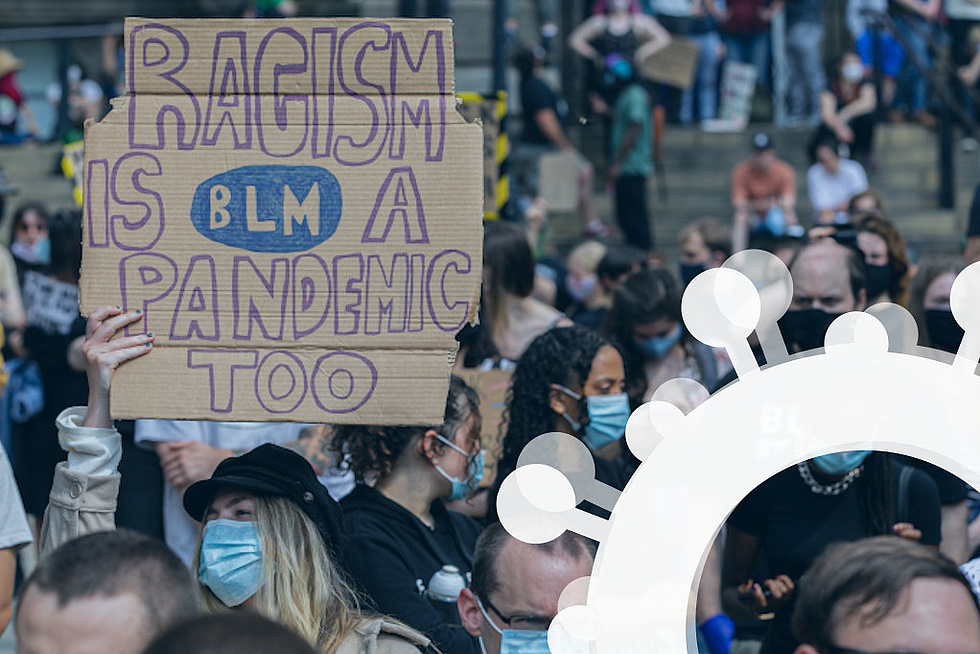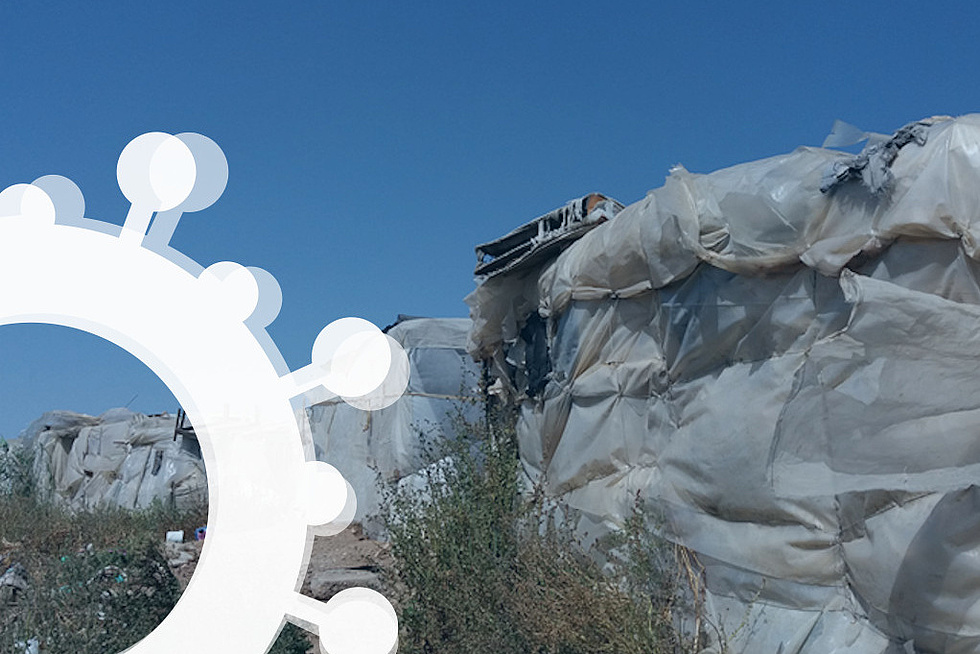The COVID-19 pandemic has highlighted the imperative for universal health coverage (UHC) in protecting public health, promoting inclusion, and building the resilience of our communities in the face of a health crisis. For health systems to deliver UHC, they require an adequate, trained, well-equipped and motivated health workforce. Even before the pandemic, the world was already short of health care workers, and the crisis has only made this problem more acute. To meet the surge in demand for health care, governments have embarked on various measures to bring in migrant health workers, as well as refugees with a health background who are already present in the country. Measures include facilitating renewal of work authorisation, international recruitment, allowing temporary licensure, granting of limited permits and fast-tracking the processing of recognition of foreign qualifications. Many migrant and refugee workers have stepped up to the call by governments. At present, they make up a significant proportion of health workers at the frontlines.
This article will look at the issue of health worker migration as it intersects with the challenges of health labour migration governance and the struggle for universal health care, particularly in light of the current pandemic.
Health workers at the frontlines
In the 86 countries surveyed by the World Health Organization (WHO) as part of the State of the World’s Nursing Report, it is estimated that 1 out of every 8, or 3.7 million, nurses are foreign-born or foreign-trained. Breaking this down further, migrants make up 12 percent of the 1.9 million health workers in the UK, 17 percent of the 12.4 million health workers in the US, and 11 percent of the total health workforce in the European Union. It is also worth noting that more than 80% of the global health workforce are women.
Since the beginning of the outbreak of COVID-19 in early 2020, health workers at the frontlines are the ones who face the highest risk of exposure to and infection from the virus. The lack of necessary personal protective equipment (PPEs), inadequate facilities and staff shortages have led to high levels of infections and deaths among health workers. Globally, health workers account for 1 out of 6 cases of infections reported to the WHO. In early September, Amnesty International reported over 7,000 health worker deaths since the start of the pandemic. Among those who died are migrant health workers, including a high number of those working in elderly care homes. In the USA, almost half of the nurse deaths due to COVID-19 are nurses of colour or those with a migrant background. A third of the deaths are nurses from the Philippines, a country that is known to deploy thousands of health workers overseas. In the UK, COVID-19 infections in the nursing workforce were highest among the Asian ethnic group. The risk of dying from the virus was reported to be higher in black, Asian and minority ethnic (BAME) communities. Like in the US, a disproportionate number of those who have died are Filipino health and care workers. This tragic and massive loss of health workers’ lives and the high number of migrants amongst those lost are not, however, merely a correlation.
The right to health and its intersection with health labour migration
The pandemic has exposed the systemic problems and the fragile state of our health systems. Over the years, as a result of the adoption of neoliberal economic policies in many developed and developing countries, public health services have been constantly underfunded. Years of austerity and contraction of public health budgets have left public services under-resourced and understaffed. The decades of privatisation and marketisation of our health services have led to inefficiencies, corruption, job cuts, overburdening of staff, and the rising cost of health coverage. For many health workers, staying in the health workforce has become unbearable that many have left the profession, and for others, migrating to higher income countries became the only choice.
While facing a shortage of health workers, developing countries are also losing their health workers to migration. Over the last decade, the number of migrant doctors and nurses working in OECD countries has increased by 60%, and the rate is even higher for those migrating from developing countries that already have severe health workforce shortages. While high income countries benefit from the international recruitment of trained health workers, poor countries are being deprived of their skilled health workers after having invested their limited resources in their training. Faced with a depleted health workforce and weak public health services, the ability of developing countries to address their population’s health needs and to battle pandemics and other disasters is compromised, thereby making the goal of UHC impossible to achieve. This pattern of poor countries training and then losing their health workers to rich countries could, in some ways, be seen as a perverse albeit unintended subsidization by poor countries of the health systems of rich countries. The consistent underfunding of systems in the Global North has been enabled by increasingly drawing on skilled migrant labour, paying lower salaries, with worse working conditions and less legal recourse. This process adversely affects health systems globally, permitting underfunding and causing understaffing.
Pushing for a Rights-based Approach to Health Labour Migration
Amid this pandemic, health workers across the world are taking to the streets demanding for their rights and safety at work, including access to personal protective equipment (PPEs) and adequate facilities, for just compensation, for social protection, for their inclusion in decision-making, and funding of public health services. During lockdown, many cities saw their inhabitants applauding health workers from their homes as a sign of recognition. As much as applause makes noise, noise is not enough. What health workers need is the proper recognition of their value in society. They do not want to be called heroes who are expected to risk their lives in the line of duty. They are professionals dedicated to their job of caring for patients and saving lives.
Migrant health and care workers at the frontlines demand the same. Due to their migration status, particularly those on temporary permits, and the need to send remittances back home to support their families, migrant health and care workers endure long working hours, poor wages, few benefits, and are reluctant to raise their concerns for fear of sanctions that range from discrimination to deportation. Women, who make up the majority of these workers, are doubly vulnerable as they endure precarious working conditions while expected to carry out care responsibilities within family and society. The pandemic has pushed these migrants beyond an already unsustainable point, thus public funding for health systems will have to be cognizant of their vulnerabilities as migrants to avoid the continued exploitation of their status.
Conclusion
The COVID-19 pandemic has highlighted the vital role of public health services in promoting UHC in battling the crisis. It has also shed light on the systemic problems leading to the current fragile state of our health systems, their impacts on the health workforce, including the loss of health workers due to migration, disproportionately affecting developing countries. The situation of migrant health workers at the frontlines needs particular attention. Countries, rich and poor, are facing the pandemic, albeit not on equal footing. Public health systems require an adequate and healthy workforce to provide UHC. Recruitment of migrant workers to meet the surge in demand for health care has been considered as one of the solutions. However, dependence on health labour migration is problematic as it ignores the systemic inequalities that should have been addressed in the first place. A rights-based approach, taking into account issues of human rights, gender dimension, fair economic policies and shared governance responsibilities, is a necessary first step to the governance of health labour migration, therefore balancing the rights of workers, the right to UHC and fair outcomes for both origin and destination countries.
Recommendations
Public Services International, the global federation of public service trade unions representing almost 10 million health and social care workers organized by its affiliated unions in the health and social care sectors, have been engaged on the issue of health workforce migration for over a decade. PSI works with its unions in organising health workers, including migrant health workers, promoting social dialogue and lobbying for rights-based migration policy at global, regional and national levels. Grounded on its experience, PSI puts forward the following recommendations in addressing the nexus of UHC and health labour migration governance, particularly considering the pandemic crisis. [1]
- The need for global social responsibility, with funding for the long-term sustainability of health care systems, quality public services and the right to health. Governments need to ensure increased and sustained funding of public health services to deliver on UHC and build resilience against the pandemic and other crises. This includes ensuring adequate numbers of trained health workers and sustained public investment in staffing and equipment, including the provision of PPEs, planning and health systems restructuring that prioritizes people over profit. Rich countries must strive more to assist developing countries in the pandemic crisis response and recovery efforts, including debt cancellation for the poorest countries. Demand the World Bank and the International Finance Corporation to stop privatisation and the flawed model of public-private partnerships, and for the International Monetary Fund to end its policy of directing governments to cut public spending and public sector wages that lead to more poverty and driving forced migration. Trade unions, civil society and other right to health advocates should continue to critique the migration-led recruitment strategy being used by high-income countries of destination as a means of solving their health workforce shortages.
- A stronger WHO Code to ensure the full implementation and monitoring of the principles on fair and ethical recruitment.The COVID-19 pandemic has made the case for a strengthened WHO Code on the International Recruitment of Health Personnel. It is imperative that all WHO Member States fully implement the standards set, and regularly report on its implementation. We want to see the WHO Code becoming a binding instrument and for it to develop stronger lateral links to other international policies on equality, public health and the Sustainable Development Goals (SDGs). Binding measures are needed to mandate governments to take action to ensure ethical recruitment and implement legislation to regulate private recruitment agencies, eradicate unethical recruitment practices, and to end the practice of charging health workers recruitment fees. From a trade union perspective, social dialogue and partnerships with workers’ organisations are critical to the implementation and monitoring of the Code. Greater awareness and visibility are needed to promote the principles contained in the WHO Code and to encourage stakeholder participation in its implementation and monitoring.
- Fundamental labour rights of migrant workers and the full implementation of global governance instruments on migration.Improvements in ratification and implementation of key ILO and UN instruments on migration and international labour standards will help to strengthen the rights of migrant health workers. Principles contained in these instruments must be integrated into the design of bilateral and multilateral agreements. In line with the recommendations of the UN Migration Network, include migrant health workers and their unions in COVID-19 responses, and ensure that migrant health workers are included in professional indemnity schemes for COVID-19 for health workers, that migrant workers are included in policies and protocols on health worker infection, disability, or death and in return-to-work protocols, and are given adequate support with on-the-job training. We need a deeper look into the reorganization of care work in order to address the multiple discrimination and barriers faced by women in access to and delivery of care, with an important first step of integrating care into public services and public policy.
- Bilateral Labour Agreements (BLAs) that promote economic and social development, fair and ethical recruitment and international labour standards.With the increasing use of bilateral labour agreements in facilitating health worker migration, the WHO Code, along with human rights norms and labour standards, should serve as a pre-requisite in the negotiation and implementation of any bilateral or multilateral labour migration agreement. Training and other reciprocal arrangements should be integrated into the design of BLAs to mitigate the effects of outward migration in the source country, and that initiatives are grounded in social dialogue. A comprehensive database of BLAs should be established within the technical competence of the International Labour Organization and the WHO, and their contents should be transparent to ensure proper monitoring and compliance with international norms and labour standards.
- Social dialogue in national and global migration governance.Tri-partite and bi-partite social dialogue should be promoted in all global governance initiatives that impact on migration and the role of public services in meeting human rights needs in the context of migration. Effective social dialogue should be built into all negotiations for and implementation of BLAs and all monitoring of BLAs should measure progress in and outcomes of social dialogue, including collective agreements. Global migration developments relating to the health workforce, such as the global skills partnerships (GSPs), should be agreed and implemented through social dialogue. There should be full engagement of trade unions to ensure the protection of human and labour rights and mutual benefits for both countries of origin and destination. Trade union rights should be guaranteed to all migrant workers regardless of status. In the context of the pandemic, support the call of the labour movement for the classification of COVID-19 as an occupational disease thereby requiring stronger workplace protections and access to compensation and medical care when workers fall ill. Migrant health workers, regardless of migration status, should have the right to remove themselves from unsafe working conditions and must have access to grievance mechanism and redress as well as to labour inspections.
Author:
Genevieve Gencianos is the Migration Programme Coordinator of Public Services International, the global trade union federation of public service workers. Email: genevieve.gencianos(at)world-psi.org
[1] The recommendations elaborate on the 5-point-plan outlined in Pillinger and Yeates (2020), “Building Resilience Across Borders: A Policy Brief on Health Worker Migration,” published by Public Services International and Friedrich-Ebert-Stiftung.





